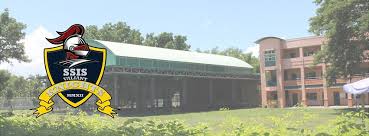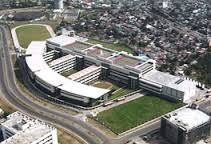Sponsored Links
The International Schools
How is International School established?
The History

The first international schools were founded in the latter half of the 19th century in countries such as Japan, Switzerland and Turkey. Early international schools were set up for families who traveled, like children of personnel of international companies, international organizations, non - governmental organizations (NGO), and embassy staff.
The schools were established with the people and organizations having large interests in the hosting nation: for instance, American diplomats and missionaries often set up schools to educate their children; children of American military and army families often attended Department of Defense Dependents Schools (DoDDS); French diplomats and business families founded similar schools based on the French curriculum
The Criteria
At a conference in Italy in 2009 the International Association of School Librarianship came up with a list criteria for describing an international school, including:
Transferability of the student's education across international schools.
A moving population (higher than in state schools or public schools).
Multinational and multilingual student body
An international curriculum.
International accreditation (e.g. Council of International Schools, International Baccalaureate, North Eastern Accrediting Commission for Schools, Western Association of Schools and Colleges).
A transient and multinational teacher population.
Non-selective student enrollment.
Usually English or French language of instruction, plus the obligation to take on at least one additional language
The Curriculum
International schools typically use curricula based on the school's country of origin. The most common international schools represent Education in the United Kingdom or Education in the United States.
Many international schools use curricula specially designed for international school such as the International General Certificate of Secondary Education or the IB Diploma Programme that are all predominantly committed to internationalism, developing the global citizen, providing an environment for optimal learning, and teaching in an international setting that fosters understanding, independence, interdependence, and cooperation.
Like other schools, international schools teach language arts, mathematics, the sciences, humanities, the arts, physical education, information technology, and design technology. More recent developments specifically for primary school include the IB Primary Years Programme (PYP). There are currently 3063 schools offering the international baccalaureate curriculum in the world.
For expatriate families, international schools allow some continuity in education and most prefer to stay in the same curriculum, especially for older children.
The IS Teacher
Faculty at international schools are usually from or certified by the standards of their country of origin
However there are exceptions, the most common of which the international school requires a teacher trained specifically for an international syllabus or for teaching a foreign language rare to the international school's country of origin
Over the years it has become more difficult to recruit young international teachers, partly because of security concerns and the trend towards less attractive compensation packages
The IS in the Philippines
International schools in the Philippines are getting bigger and bigger. It’s quite hard to choose which school is the best and suited for your child/children.
There are a lot of factors to consider like the location and its ambiance; the security, the tuition fees; the curriculum/program they offer; the extra-curricular activities provided for the children; the school facilities such as the classrooms, IT laboratory and availability of personal computers, Science laboratory, sports facilities, libraries, clinics, theater and audio-visual rooms, auditoriums, playgrounds, comfort rooms, parking lots, and many others; and the standard of the school which comprises the quality of education and the character, ethics, morals and values of all the staff of the school starting from the lower management up to the top including the faculty members.
Prominent International Schools in the Manila
Australian International School (AIS) formerly Esteban School
Southville International School.
King’s School
International School Manila
Singapore School Manila
Reedley International School
The British School Manila.
Just a reminder: If you are a newly-relocated expat, your child/children may have to repeat the year that they are currently in or both the years that they’re currently in including the previous year they already completed due to the different school curriculum, for example, an Australian student enrolled in a British school (The British and Australian have different curriculum).
International School in the Philippines
There are many international schools in the Philippines and most of them are in Manila, while a couple others are in Cebu, Subic and Davao. The schools are accredited both locally and internationally, and they offer either an American or British IGSE school track. Needless to say, all schools are staffed by competent educators and guidance counsellors, most of which are foreigners with local and international teaching experience. Even if you’re living in the Philippines, you can send your kids to internationally-accredited schools and give them a world-class education.
 Brent International School
Brent International School
Campuses: Manila, Sta. Rosa, Laguna, Subic and Bagiuo
Brent was founded by a Canadian by the name of Charles Henry Brent in 1909. It was originally created as a boarding school for boys, particularly sons of Americans stationed to work here in the Philippines. Right now, it’s a co-educational campus providing education to a culturally diverse population of students.
Nursery- $1,354 + PhP 62,188
Pre-Kindergarten- $1,754 + PhP 80,594
Lower School (Kindergarten to Grade 1-5)- $3,364 + Php 154,622
Middle School (Grades 6-8)- $3,604 + Php 165,732
Upper School (Grades 9-12)- $3,902 + Php 179,424
 Southville International School and Colleges
Southville International School and Colleges
Campuses: Paranaque and Las Pinas
Unlike Brent, Southville offers undergraduate programs and even an International Baccalaureate (IB) degree.
Southville International School and Colleges (SISC) originally started as Southville International School in 1990. Initially, they only offered pre-school classes, but the school quickly grew in population, so they started offering lower school, upper school and college degree courses.
What’s unique about this school, compared to most schools, is their International Baccalaureate (IB) program. It’s a 2-year preparatory course perfect for those who want to get a degree from top universities around the world. This degree is recognized by top colleges and universities around the world, and has proven effective for more than 100 countries since the 70s.
 International School Manila
International School Manila
Basic Tuition Fees per Semester
Pre-School 3- $2,190 + PhP 71,100
Pre-School 4- $2,930 + PhP 94,800
Elementary School (Kindergarten-Grade 4) – $4,640 + PhP 148,500
Middle School (Grades 5-8)- $5,070 + PhP 162,750
High School (Grades 9-10)- $5,390 + PhP 173,500
High School (Grades 11-12)- $6,030 + PhP 193,700
Campus: Taguig
International School Manila or ISM is a premiere co-educational school established way back in 1920. Their students and graduate are top performers, who have proven their success by being accepted into Ivy League universities such as Yale, Stanford, Harvard and MIT. ISM started off as a school for American kids, but the rate of enrolled American students have changed since after the war. The school now has a diverse culture of 45% Asians, 28% North Americans and 4% Europeans. Like most international schools in the Philippines, ISM has an elementary, middle school and high school division.
Stonyhurst Southville International
Campus: Batangas City/Lipa
SSIS develops the child not only to excel in academics but more importantly in values. The only school with a built – in support system in Math and English through Kumon
Benchmarked internationally MCREL International Standards, USA National Council of Teachers of Mathematics Standards, USA Sinagapore Standards in Mathematics and Science Applies UBD (Understanding by Design), PLED (7Ps)
English speaking community
Excellent facilities
Small teacher – pupil ratio
Tie-up with Southville International School and Colleges, Metro Manila
Tuition Fee: starts ate P95,000.00
What is RA 9493
Many are claiming to be international schools, but only a few have got the real deal.
As Dep-Ed Undersecretary for Regional Operations, Ramon C. Bacani said, “Real international schools catering primarily to foreign students are few since they can be established only by legislation if not presidential orders.”
Southville International School and Colleges (SISC), now on its 19th year, is one of only two international schools in the Philippines created by legislation.
On July 24, 2006, the Philippine Senate and the House of Representatives then headed by Sen. Manny Villar (Senate President) and Cong. Jose de Venecia, Jr. (Speaker of the House of Representatives) respectively, enacted into law Republic Act 9493, “recognizing Southville International School as an educational institution of international character, granting certain prerogatives to hasten its growth as such and for other purposes.”
Curriculum for Upper School – Grade 9 of Different Schools
_0.jpg)
http://overseaschools.com/top-reasons-child-study-international-school/
http://www.senate.gov.ph/republic_acts/ra%209493.pdf
Refer these to your siblings/children/younger friends:
HOMEPAGE of Free NAT Reviewers by OurHappySchool.com (Online e-Learning Automated Format)
HOMEPAGE of Interesting ARTICLES on Jose Rizal's LOVE Life, Works, and Writings
To see how our MODERN ELearning Reviewers work, please try this 5-item sample:





Add new comment